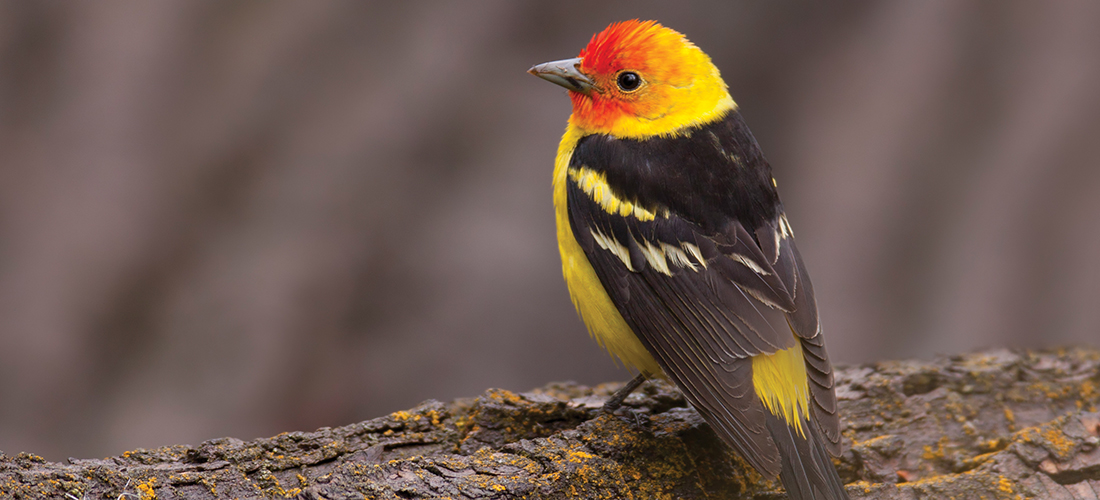
New Birds on the Block
You never know. You could spot a western tanager
By Susan Campbell
The most exciting part of watching birds is that you never know who might show up — and when. After all, they have wings. They can and do show up, almost anytime, almost everywhere.
Here in the Piedmont and Sandhills of North Carolina, western wanderers suddenly show up, soaring overhead, perched in treetops or even at our feeders.
Like the western tanager, for instance, which we’ll get to shortly. But a few words on the wanderers first.
Some birds are more prone to vagrancy than others. Whether this behavior is aimlessness — getting lost or being blown off course — is hard to say. Not surprisingly, long-distance migrants are at highest risk for becoming confused en route. And while it’s been studied at great length, the truth is that we understand very little about migration.
Here’s all we know: most birds are successful at migration, which allows their genes to be passed on to the next generation. This is not to say that those birds that end up off track are bound to stay lost forever or perish as a result of a wrong turn along the way. In fact, researchers believe that, in some cases, these out-of-place individuals represent the beginning of a range expansion for their species. It’s documented: Bird populations move into new areas of the United States.
A species that has been observed well outside of its normal range in the winter more and more frequently is the western tanager. This small and colorful songbird is found in the warmer months throughout most of the Western United States in a variety of wooded habitats. Come fall, they traditionally head for Mexico and Central America. But in the early 1990s, one showed up at a feeder in Wilmington. It stayed for the winter and, amazingly, repeated its winter stay twice, happily feeding on suet, shelled seeds and fruit.
Since that first visitor, more than two dozen western tanagers have been documented along the southern coast of our state. What does this mean? It’s probably too soon to tell. But bird lovers in our southeastern counties are keeping an eye out for westerns each year.
This winter, a male western tanager has reportedly settled into a yard in Apex. The host is pleased. And more than likely, the handsome bird is one of two that were in residence there last season.
All tanagers molt twice a year. Because they’re drab looking from early fall through early spring, western tanagers are sometimes hard to identify when they appear in the East. Unlike our more common summer and scarlet tanagers, westerns have noticeable barring on their wings and are a bit brighter yellow on their under parts.
I would wager that very few people reading this column have ever seen a western tanager out of its seasonal range. But it pays to be prepared with binoculars and a good field guide should an unfamiliar visitor appear. Wherever you are, rarities are always possible, even in your own backyard. PS
Susan would love to receive your wildlife observations and/or photos at susan@ncaves.com.





